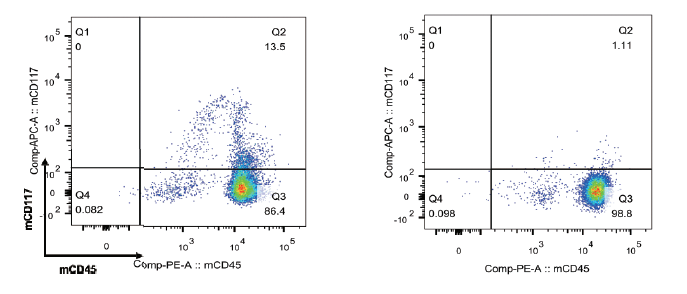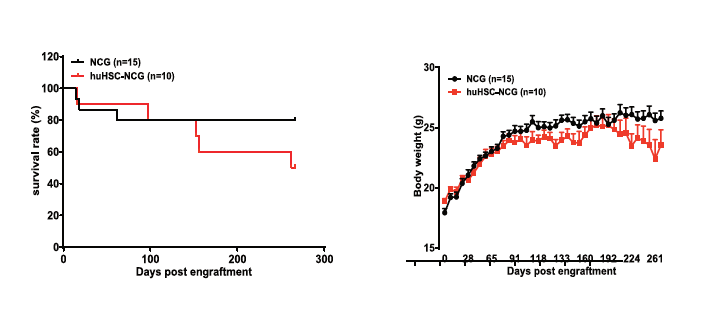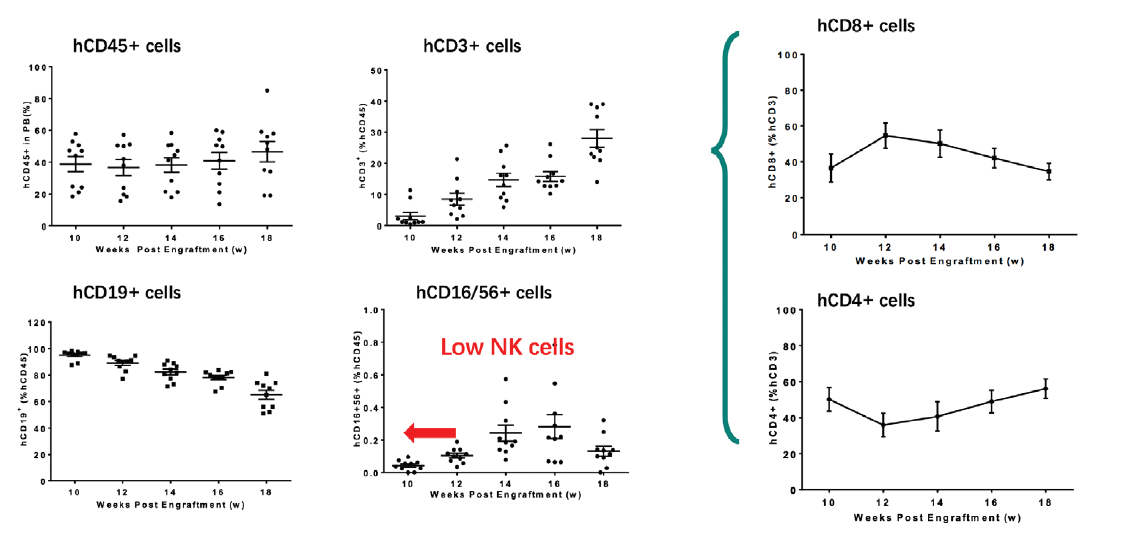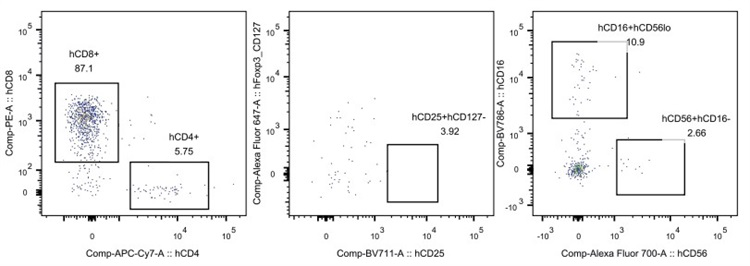huHSC-NCG mice are generated by implanting Hematopoietic Stem Cells (CD34+HSC) into GemPharmatech's severe immunodeficient NCG mice. The transplanted HSC in irradiated NCG mice then differentiates into a variety of hematopoietic or immune cells, including T cells, B cells, and NK cells. With a long survival cycle and stable reconstituted human immune system, this model can be used for long-term in vivo studies for testing drug efficacy, making it an ideal model for preclinical drug evaluation.
Strategy

Applications
Preclinical anti-tumor efficacy study and safety evaluation
Testing of immuno-oncology therapies
Supporting data
1. Detection of the marrow clearing effect in NCG mice
Without irradiation With irradiation

Irradiation can eliminate the hematopoietic stem cells in the bone marrow, thereby improving the level of reconstruction after transplantation of human HSC. The results showed that the proportion of mCD45+mCD117+ cell population after irradiation was 1.11%, which was significantly lower than the non-irradiated group (13.5%). This result suggests that 150 cGys dose irradiation of 6-7 weeks NCG mice can achieve the desired marrow clearing effect.
2. The survival curve and the body weight change of the huHSC-NCG

The huHSC-NCG mice can survive more than 37 weeks. In the first period, the body weight of huHSC-NCG mice tended to increase and was not significantly different from that of non-irradiated NCG mice that did not undergo HSC reconstitution. Over time, the body weight of huHSC-NCG mice decreased. By the end of the experiment, it was significantly lower than that of NCG mice that had not undergone irradiation and HSC reconstitution (***, P < 0.001). Overall, the body weight of huHSC-NCG mice increased over time without significant weight loss during long-term immune reconstitution, making this a good model for long-term investigations. Data are shown as mean±SEM.
3. The human immune reconstitution level of the huHSC-NCG mice

The human immune cell levels in peripheral blood of huHSC-NCG mice were detected by flow cytometry. These are primarily T cells, many immature B cells, and a modest number of NK cells.
4. The reconstitution levels of humanized immune cells in the huHSC-NCG mice at week 16


Flow cytometry of huHSC-NCG mice peripheral blood at week 16 revealed that a range of human-derived immune cells could be recognized, with the proportion of human leukocytes at more than 20%, indicating that the humanized model of huHSC-NCG was successfully established in this experiment.

